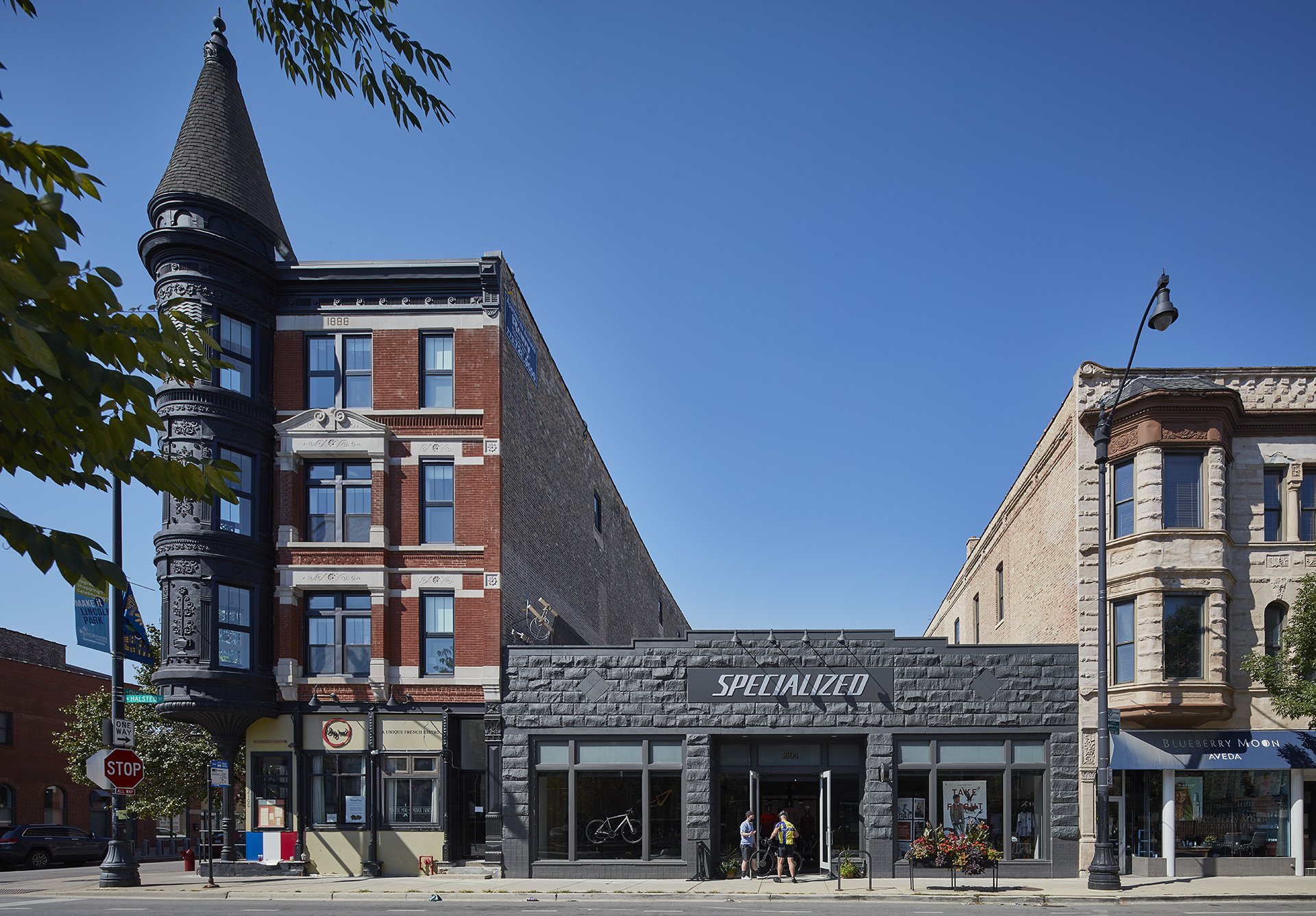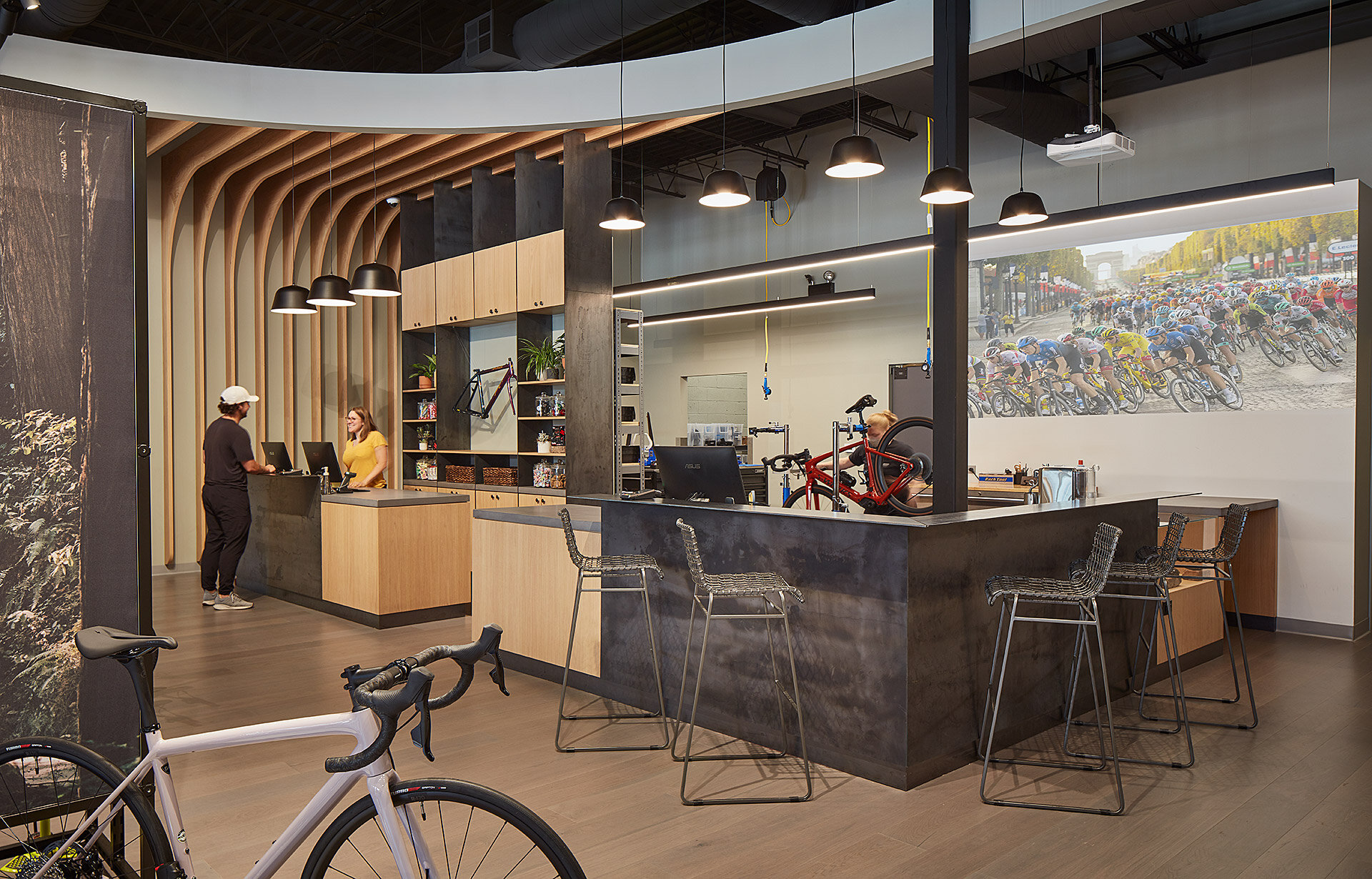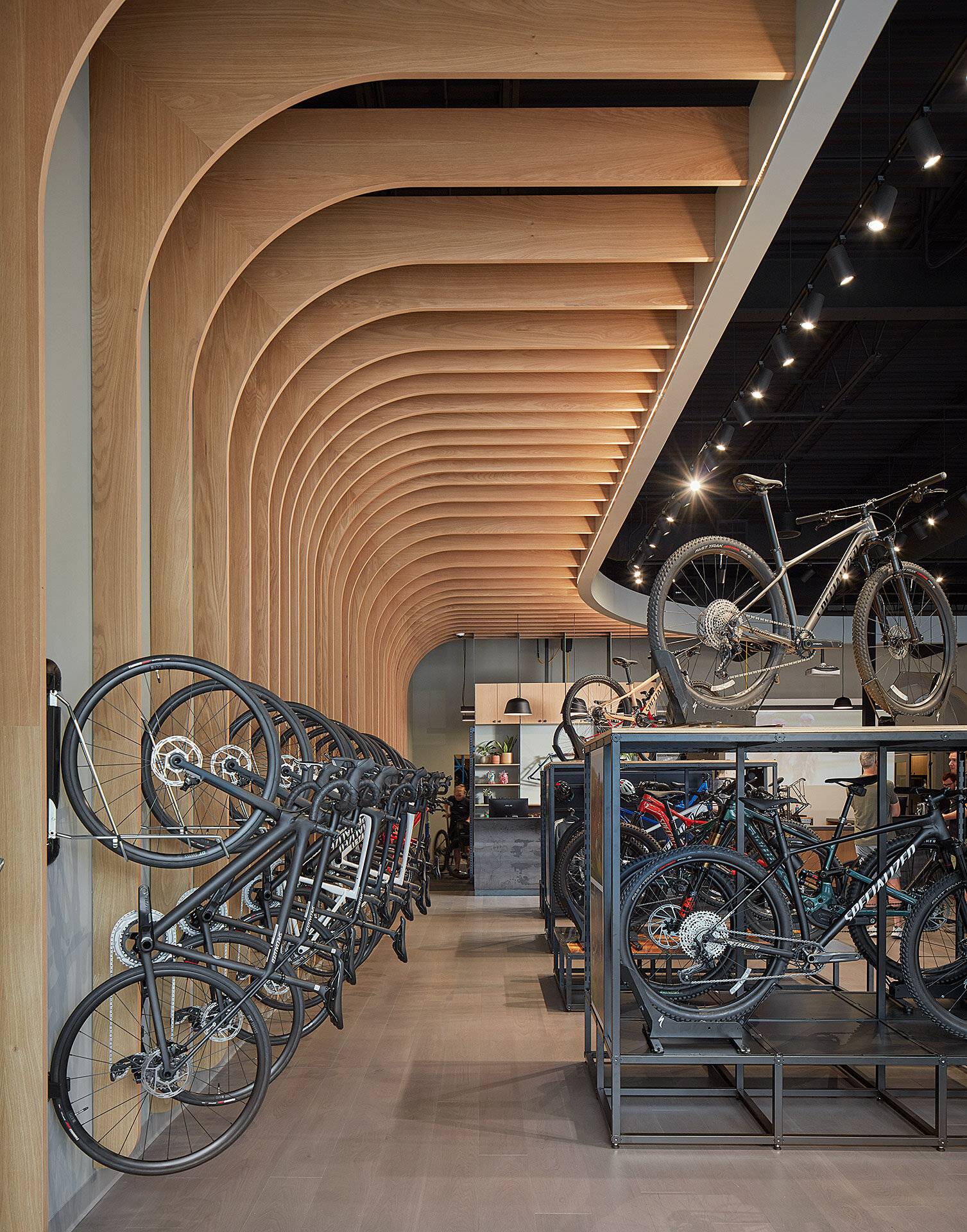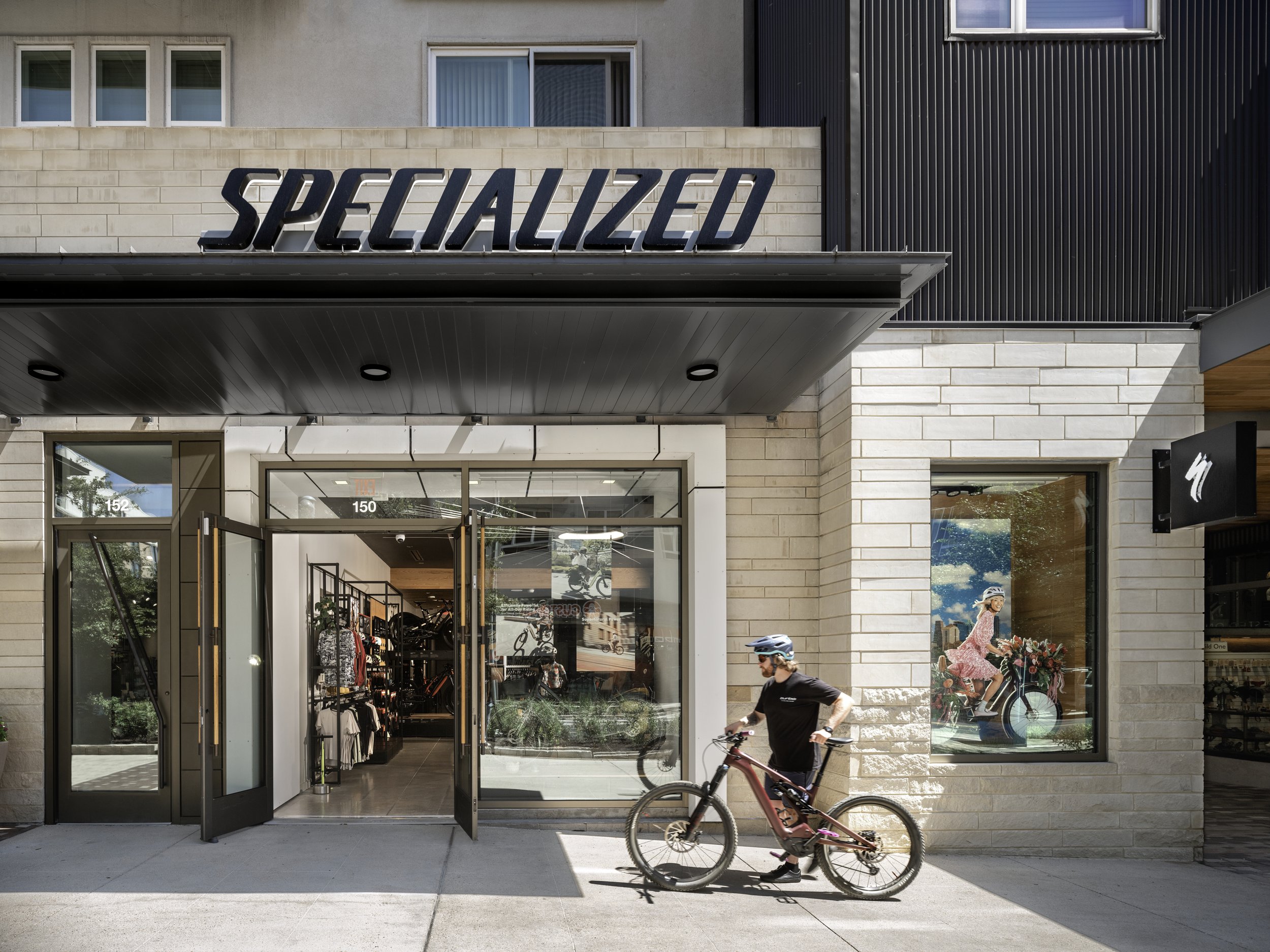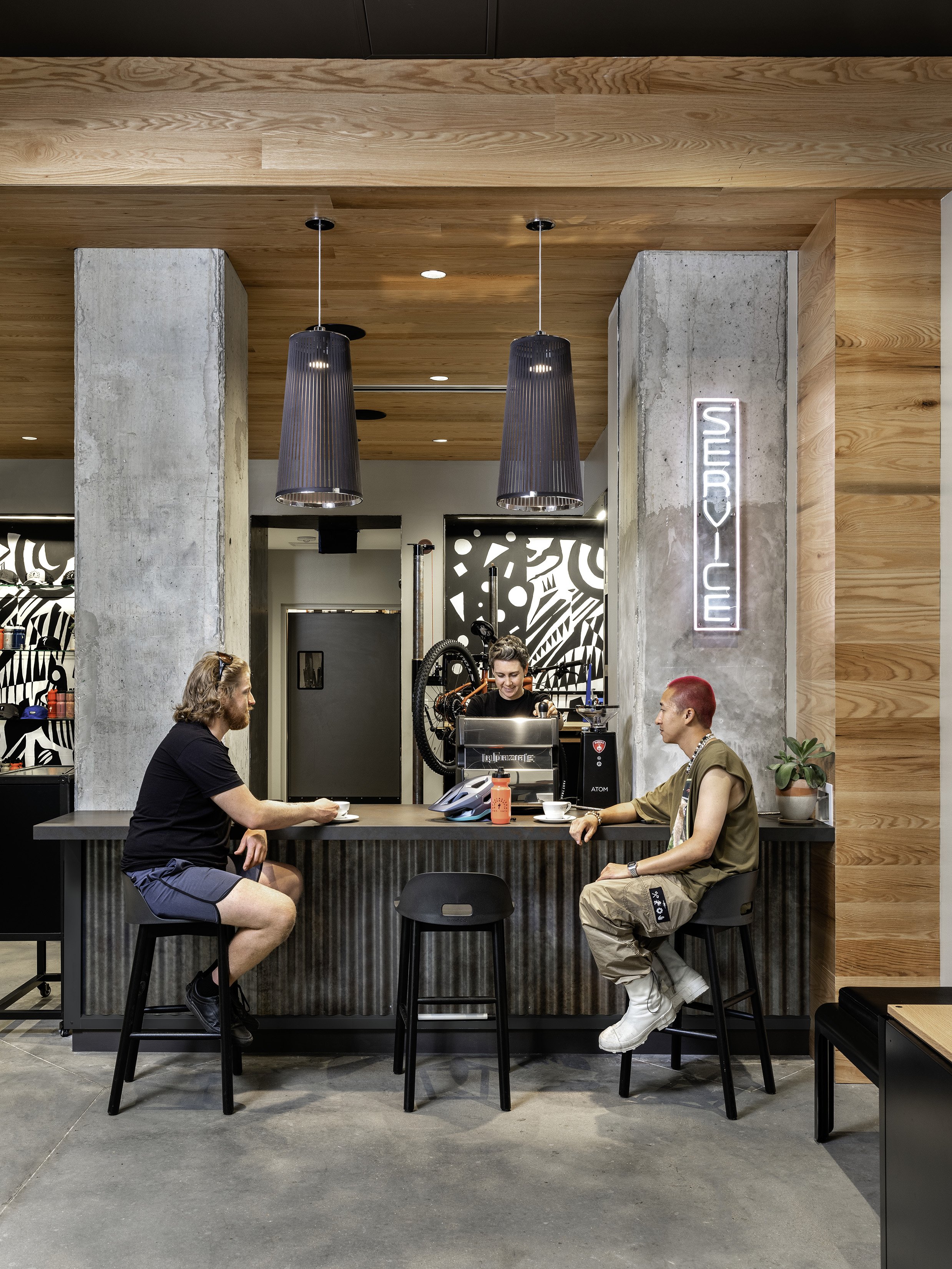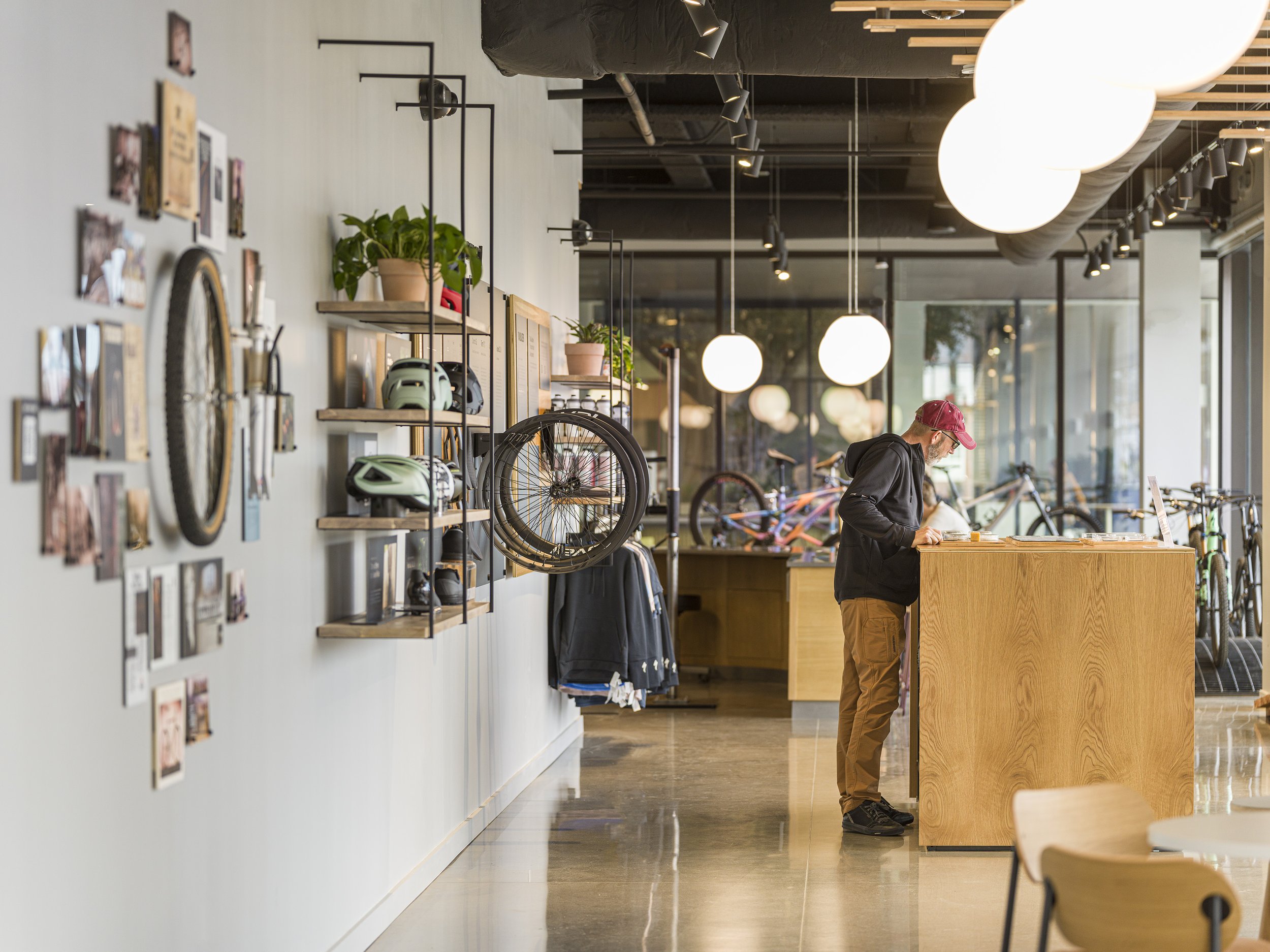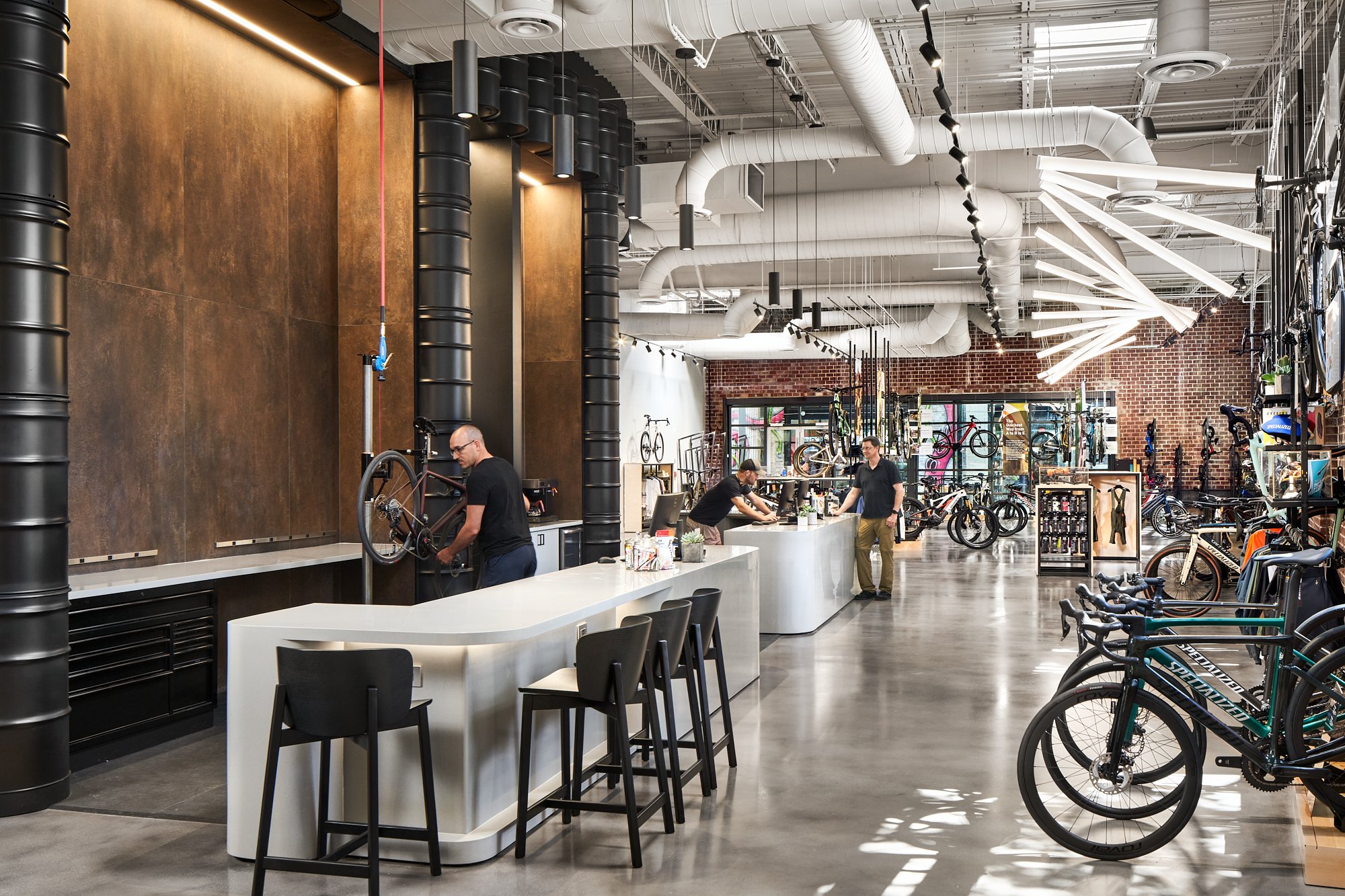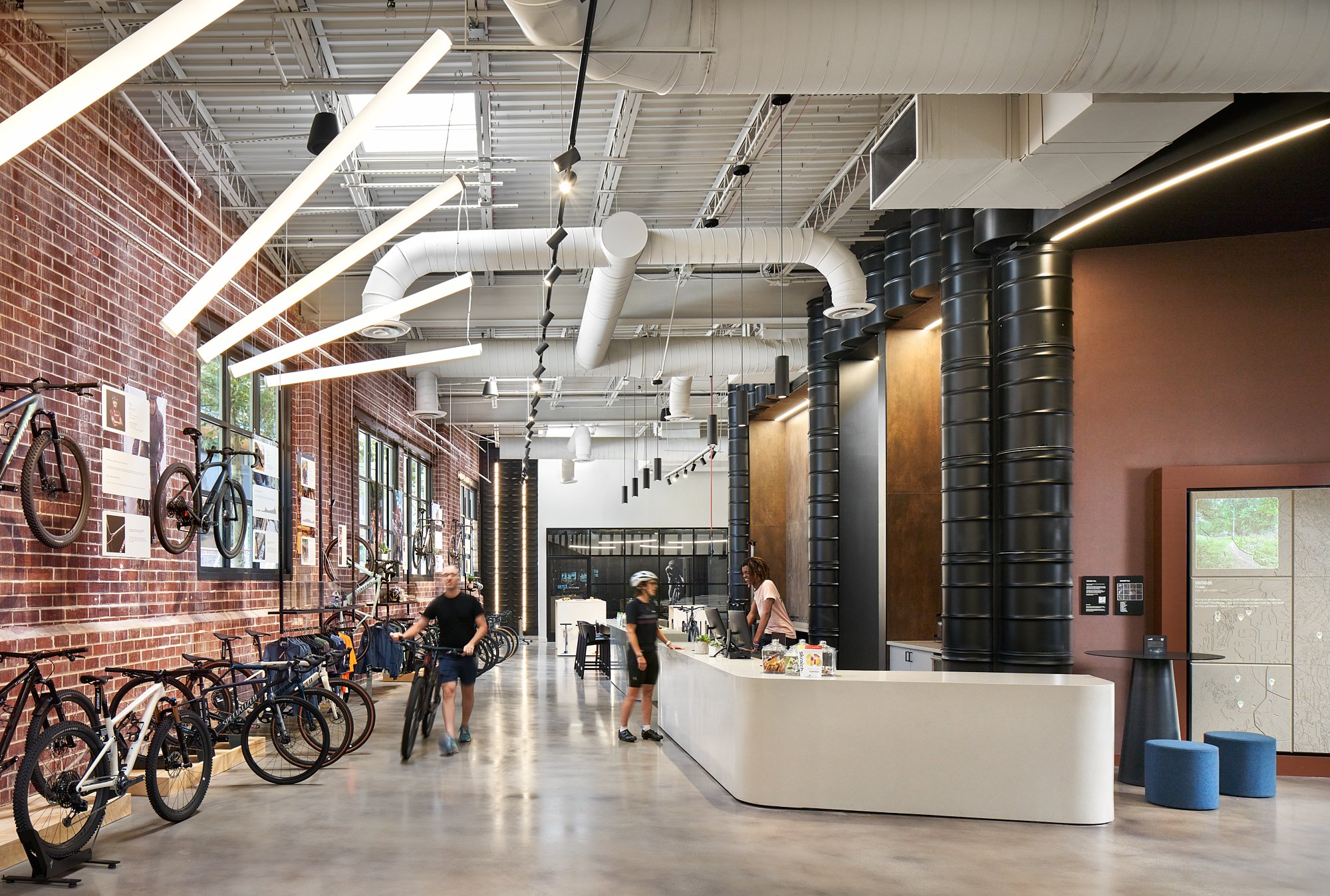Insights from OKW Design Director and Partner Katie Lambert AIA and Project Architect Joan Russick AIA on our four retail buildouts for the global cycling brand.
“I have such a personal attachment to this project,” Joan Russick AIA reflects. “It let me tap into a significant part of my life but in a very different way.”
Long before she worked as a Senior Project Architect at OKW, Joan fixed and sold bikes. As we competed to design a retail concept in late 2020, her name was added as part of our project team. The reason was twofold: her joint talents in architecture and interior design as well as her unique background working in bike shops.
The opportunity, a retail location for Specialized Bicycle Components in Lincoln Park, was intriguing, fun, and the first of its kind in Chicago. To create a brand-owned retail experience in the cycling community was not just unusual, it was game-changing. Prior to this model, anyone interested in buying a bike would visit the type of bike shop that Joan used to work in.
From the beginning, Specialized’s goal was to evolve the standard and transactional experience of buying a bike into something more community-driven and hospitality-minded.
While she argues that there’s no such thing as a “typical” bike shop, Joan describes many of them like record stores: very curated, with a hipster vibe that is not always inviting or comfortable. The Specialized retail location, as it was envisioned and ultimately built in Chicago, was going to change those expectations.
“There’s often a misalignment between the level of refinement in a bike, a nice bike, and that of the store experience,” says Katie Lambert AIA, Design Director and Partner at OKW. In the three years since we began working with Specialized, Katie has had her hand in the design of every project. “More pointedly, there’s a total disconnect. These are sculptural and thoughtfully crafted objects, and Specialized was interested in having a space that approached itself with a very high level of respect.”
“It’s always the best time to do your best work.”
Joan Russick AIA
Senior Project Architect
Specialized chose two locations in Chicago for this concept: a Hub store in Fulton Market and a smaller Spoke store in Lincoln Park. With OKW as the lead designer in Lincoln Park, we got to work translating our client’s vision and goals into a 4,800 square-foot vacant retail space that was previously a LuluLemon.
We found inspiration in the winding path of Chicago’s lakefront path, an amenity that we enjoy every day. Our designers translated the way the running and cycling trail hugs the shoreline into a floor-to-ceiling millwork installation that doubled as bike racks.
Before the retail location had opened, we were asked to design a new store in the Domain, a mixed-use development in Austin. Thanks to our work in Lincoln Park, we were one step ahead this time. Armed with better programmatic knowledge and a more detailed sense of what our client wanted, we got to work in the Lone Star state.
“We were spoiled in this case,” Katie remembers as Austin began. “We had a client that really understood the value of design and quality and urged us to push the boundaries of their brand standards and design guidelines. That’s not always the case, so it’s delightful to work with people like that.”
Much like in Lincoln Park, the design for the new retail location in Austin would hinge on two qualities: the physical components of a bike and the surrounding city. The challenge was that the space itself was about half the size, which meant that almost all the wall space was dedicated to merchandising. To offset this, we made the design feature a dramatic light fixture suspended from the ceiling.
Meant to resemble a bike spoke, it is also a callout to guitar strings, which is a direct nod to Austin’s famous musical scene.
The thread that united these two stores was respect for the brand’s signature product, and not just in presentation. The materials used in both stores were honest expressions of those materials: wood was wood, stone was stone, and nothing was faked or approximated. In Joan’s words, “there’s truth in materiality because the client was committed to authenticity.”
As we progressed through Austin, two new projects emerged on the horizon: Bentonville and Atlanta. By this point, Specialized was comfortable enough with OKW to encourage us to continue experimenting with their brand guidelines and try something new. This was welcome news since our studio was not very familiar with Bentonville or its context. That didn’t stop us from sticking to our typical approach: walking the site and taking in Bentonville’s surprises to see if anything caught our attention.
Inspiration came quickly. We learned that Bentonville has developed a reputation for having a very active mountain biking culture.
Furthermore, the Ledger, the building that would house Specialized’s Experience Center, features an eye-catching sloped design that allowed bikers to literally ride up the building. Armed with topographic concepts, we set to creating our third retail experience for our client.
More than the other two locations, Bentonville’s store was meant to more specifically serve as a community hub (in fact, the store is neither a Hub nor a Spoke model, but an Experience Center). In addition to the service counter and a unique millwork display that echoes the Ozarks’ undulating terrain, the store includes a community wall, which is a digital projection that displays routes, pictures taken by Specialized users, and useful information about the area.
“They represent the leading edge of a much larger trend in retail,” Katie says. “Retailers at the higher end of the market are interested in experience and not just a place to buy a specific item off the shelf. They want to be places where you can test it out, engage with the product, and participate in the brand.”
In this way, these Specialized stores become more than a place to buy a bike. While they function as a bike shop, they also arrange planned weekly rides, put on workshops on bike safety and repair, and host seminars. “They’re designed to be welcoming, accessible, and comfortable,” Joan adds. “All of the stores have coffee and seats at the service counter so you can chat with the mechanic. Instead of churning through customers, the goal is to stick around, talk, and engage with the store. That requires a thoughtfully built environment.”
The most recent retail concept wrapped up in July of 2023 in Atlanta. As part of the mixed-use Krog District, the store straddles the Beltline, a 22-mile loop that has transformed the city’s urban experience. The 10,000 SF Hub store, the largest we had designed for Specialized, brought the industrial revival look with the exposed brick of the original warehouse and fleshed out the concept with 52-gallon drums that frame the point-of-sale station and community wall.
Specialized was interested in a space that approached itself with a very high level of respect.
Katie Lambert AIA
Partner & Design Director
With this retail strategy in place, Specialized is turning expectations on their head by providing a bespoke retail experience that didn’t exist before. But if you do something right, it’s only inevitable you’re your competitors would follow. In Chicago, Trek has opened a retail store a little over two miles away in Wicker Park, as has Rapha, a cycling apparel company.
OKW has been honored to join Specialized on their retail journey, watching as the concept evolved from the first Spoke store in our back yard to the standout destination in Atlanta. Like the many different types of bikes that Specialized makes, each store shines with its own unique personality, yet subtly tied to its sibling stores by a shared design thread. What made this project special from the start was the challenge of striking a fine balance between starting over from scratch and executing a typical retail rollout with standards that are applied to new locations.
And yet, what truly made each project a success was working with a client who valued design and clear communication. We didn’t know this when we first set out to work with them three years ago — the assumption at the time was that our team would design and build one store.
The experience has reinforced in Joan a virtue that she hopes she can spread to anyone in a service-related profession: “It’s always the best time to do your best work.”


